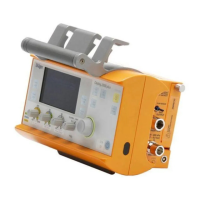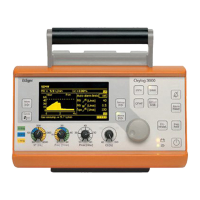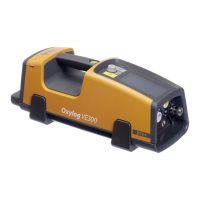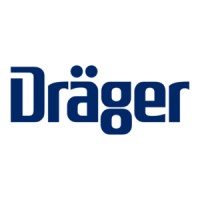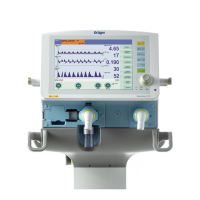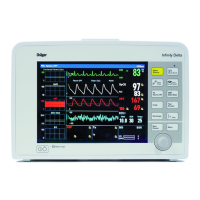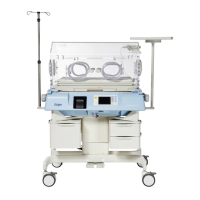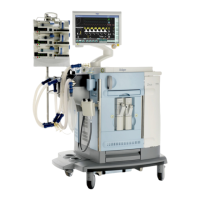Instructions for use Oxylog 3000 plus SW 1.n 143
Technical data
Inspiratory and expiratory resistance of
the device with pediatric breathing circuit
<
5 mbar at 30 L/min
<
2 mbar at 5 L/min
Nominal flow Disposable breathing
circuit for adults,
1.5 m
Inspiratory 21 L/min at 2 mbar
Expiratory 10 L/min at 2 mbar
Disposable breathing
circuit for adults,
3.0 m
Inspiratory 20 L/min at 2 mbar
Expiratory 10 L/min at 2 mbar
Reusable breathing
circuit for adults,
1.5 m
Inspiratory 22 L/min at 2 mbar
Expiratory 16 L/min at 2 mbar
Reusable breathing
circuit for adults,
3.0 m
Inspiratory 21 L/min at 2 mbar
Expiratory 15 L/min at 2 mbar
Disposable breathing
circuit for pediatric
patients
Inspiratory 12 L/min at 2 mbar
Expiratory 7 L/min at 2 mbar
Dead space including flow sensor, but
excluding accessories such as filter, HMEs
and CO
2 cuvette
Approx. 35 mL
2)
(reusable breathing circuit for adults).
Approx. 30 mL
2)
(disposable breathing circuit for adults).
Approx. 15 mL
2)
(disposable breathing circuit for pediatric patients).
Dead space of the
CO
2 cuvette
Approx. 4 mL (CO
2 cuvette)
Approx. 1.5 mL (CO
2 cuvette for pediatric patients)
Supplementary functions
Demand valve Opens the breathing system upon failure of the gas
supply, permits spontaneous breathing with ambient
air.
Relief valve Opens the breathing system in case of a device mal-
function to approximately 80 mbar.
Patient connection 22 mm ISO conical connector
1) At a supply pressure >350 kPa.
The maximum inspiratory flow is reduced to 80 L/min at a supply pressure of <350 kPa, and to 39 L/min at a supply pres-
sure of <280 kPa.
2) When using an accessory with a female connector, add 2 mL to the breathing circuit dead space.
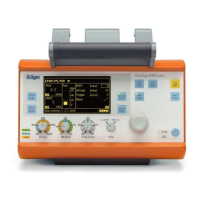
